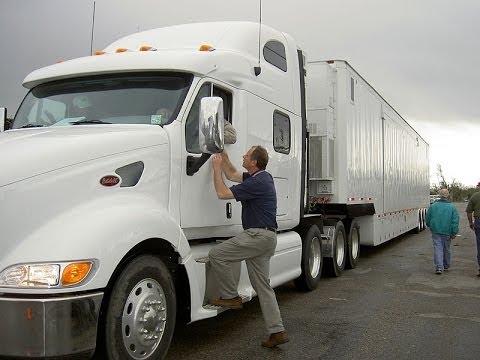For years, one of the principle battles in the trucking industry has been over the amount of hours drivers are allowed to work. Presently the rules restrict drivers to eleven hours per day on the road out of a fourteen hour work week, and this is following a ten hour period of rest in between each shift, with a maximum of 70 hours per week permitted. Furthermore, truckers must take a 30-minute break at least once during the first eight hours of their shift. Finally, there is the 34-hour restart rule which requires an uninterrupted break of at least 34 hours in a given week, occupying at least two periods between one in the morning and five in the morning.
These rules are meant to improve safety for drivers by reducing fatigue related accidents, but the trucking industry is protesting the move, stating that the only results will be a decrease in productivity with no real impact on safety. It’s too soon to tell who is in the right (though the trucking industry has noticed a loss of productivity already), but there are some numbers to indicate this may lead to safer roads overall.
Effects of the Rules on Productivity:
The first question is: why is the trucking industry protesting? The trucking industry at large is reporting that the loss in productivity averages a loss of somewhere between 1.5% and 4%, for trucking companies that offer 24-7 transportation (meaning their workers tend to work the longer shifts). While this may seem small, even this apparently minor loss in productivity does add up for smaller companies that sometimes field fewer than five trucks, to include independent operators. The net loss to the trucking industry in general however seems to sit somewhere around 2% overall, with only 15% of drivers actually impacted by the change. Most drivers actually operate well below the legal limits, and short-haul drivers are wholly unaffected by the change as their schedules naturally fell within the new limits anyway.
Effects of the Rule on Safety:
Naturally, the reason for this change ultimately boils down to safety. The quoted numbers for these regulations are a prevention of 1400 crashes per year, saving a total of 19 lives. It is believed that with these new rules in place the savings to the industry in terms of crash and lawsuit prevention as well as overall trucker health will actually match or at least outweigh the losses. The numbers seem to support the argument, with 13 percent of serious truck crashes having fatigue as a major factor according to a study by the NHTSA (National Highway Traffic Safety Administration) and FMCSA (Federal Motor Carrier Safety Administration).
Conclusion:
Ultimately the effects of the ruling are mixed, with lots of numbers but few real conclusions. While the study mentioned above does show a 13 percent rate of fatigue being involved, a trucking trade group meanwhile claims the figure is closer to 2 percent. As with all such things, the truth is likely somewhere in the middle. Furthermore, the FMCSA is also being required to conduct a study on the effects of its 34-hour restart rule, to ensure that the rule actually improves driver safety overall. Perhaps the most vocal opponents would be the truckers themselves, who claim that they don’t feel any less fatigued, merely less productive. Whether the service hours rules will actually make our roads safer is a story that only time will tell.
Sources:
Forbes: http://www.forbes.com/sites/robertbowman/2013/11/05/dots-new-curb-on-driver-hours-is-hurting-productivity-truckers-charge/
Bloomberg: http://www.bloomberg.com/news/2013-08-02/trucking-industry-loses-challenge-to-u-s-drive-time-rule.html
HDT Trucking Info: http://www.truckinginfo.com/channel/drivers/article/story/2013/08/the-effects-of-the-new-hours-of-service.aspx
This article was provided by Brennen Kliffmueller, creative writer for Driver Physicals. Brennen studied at Florida State University and currently resides in Orlando, Florida. When he isn’t working, Brennen enjoys going to the movies and trying new foods.





